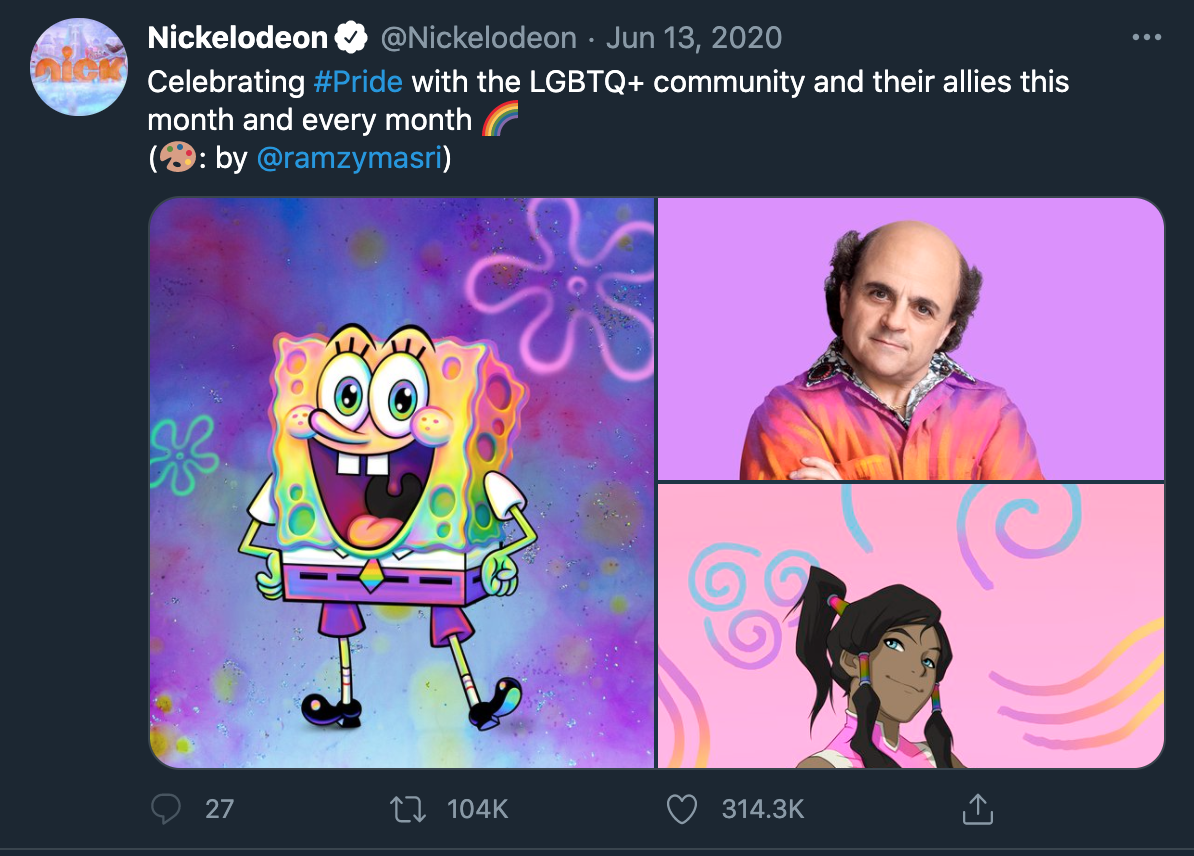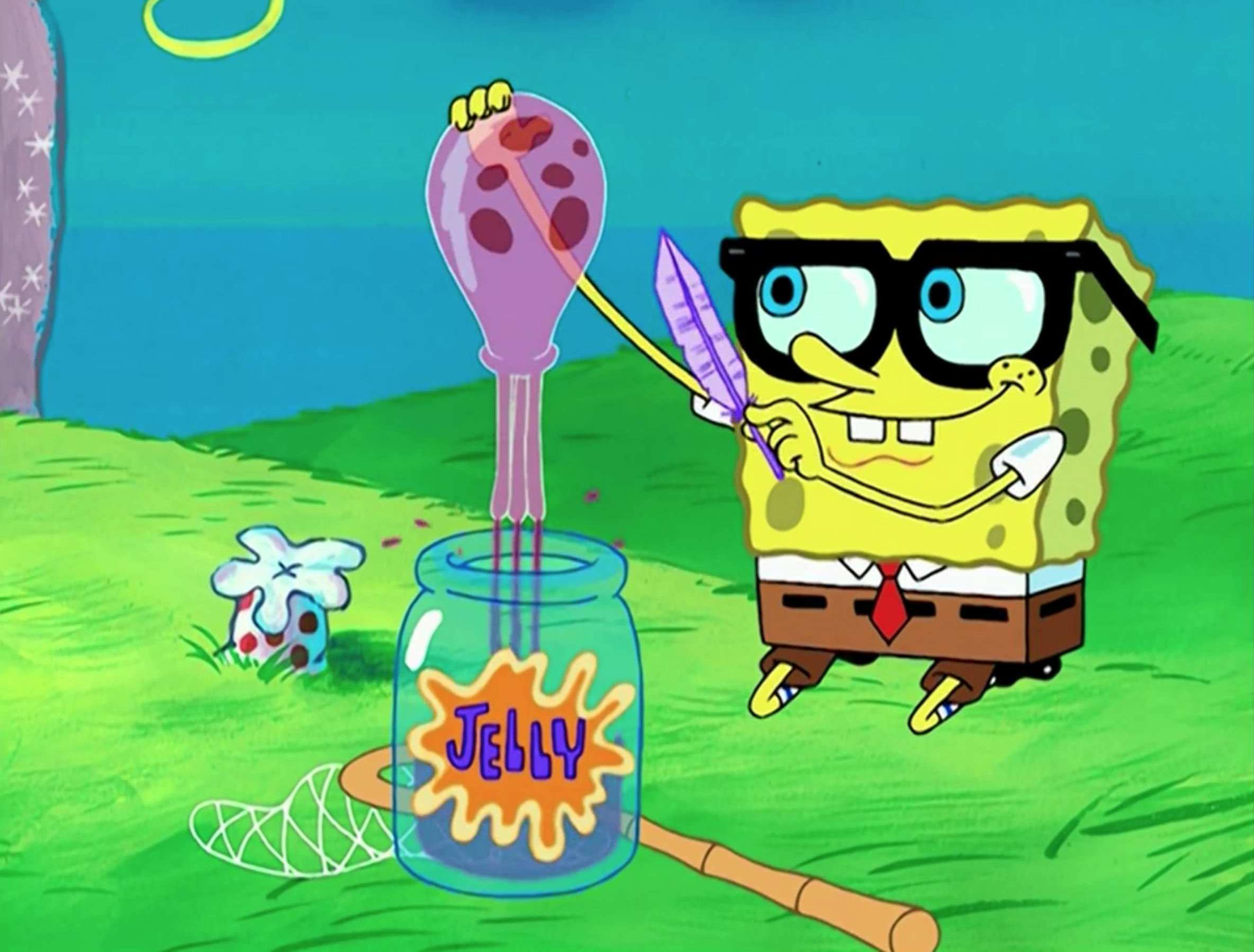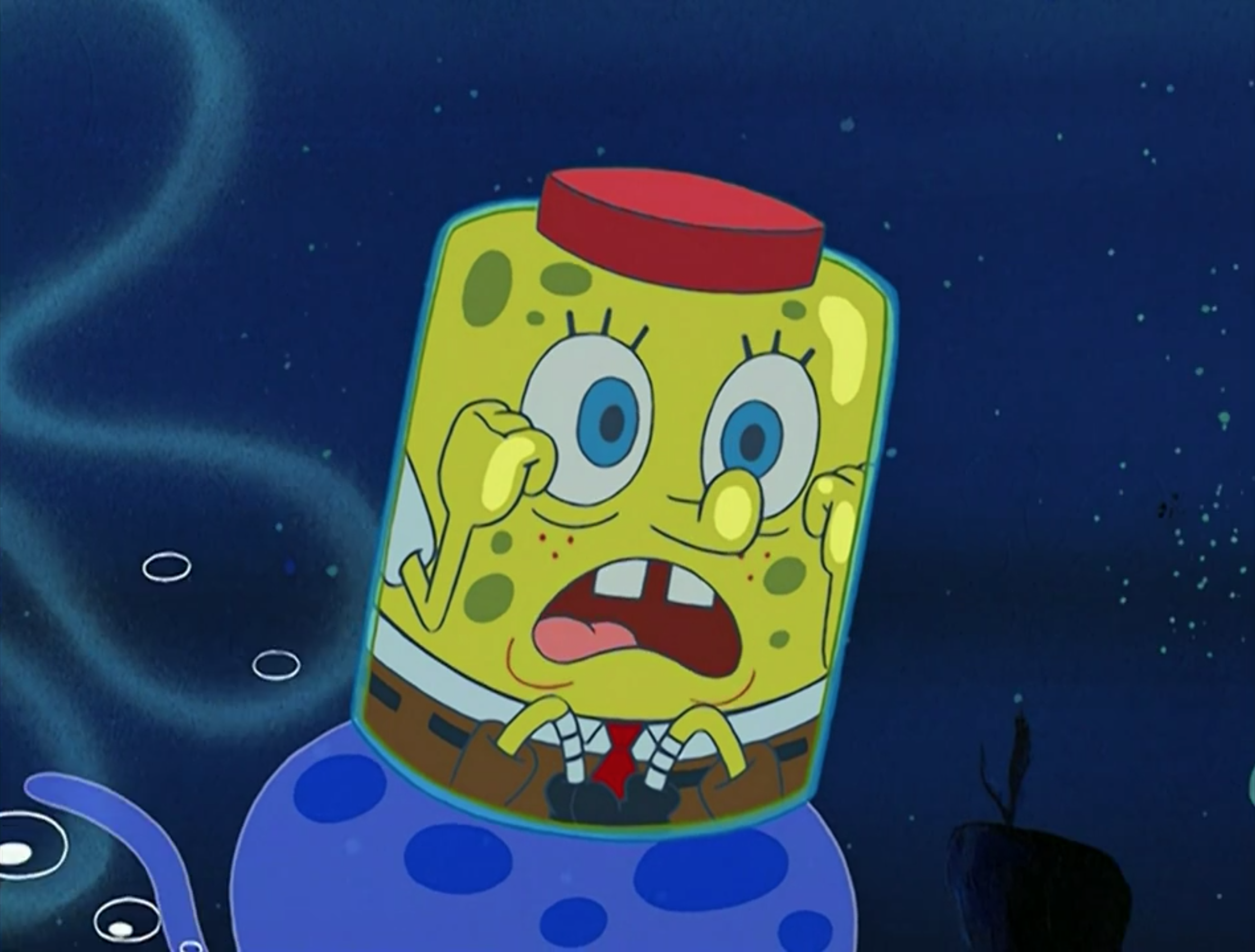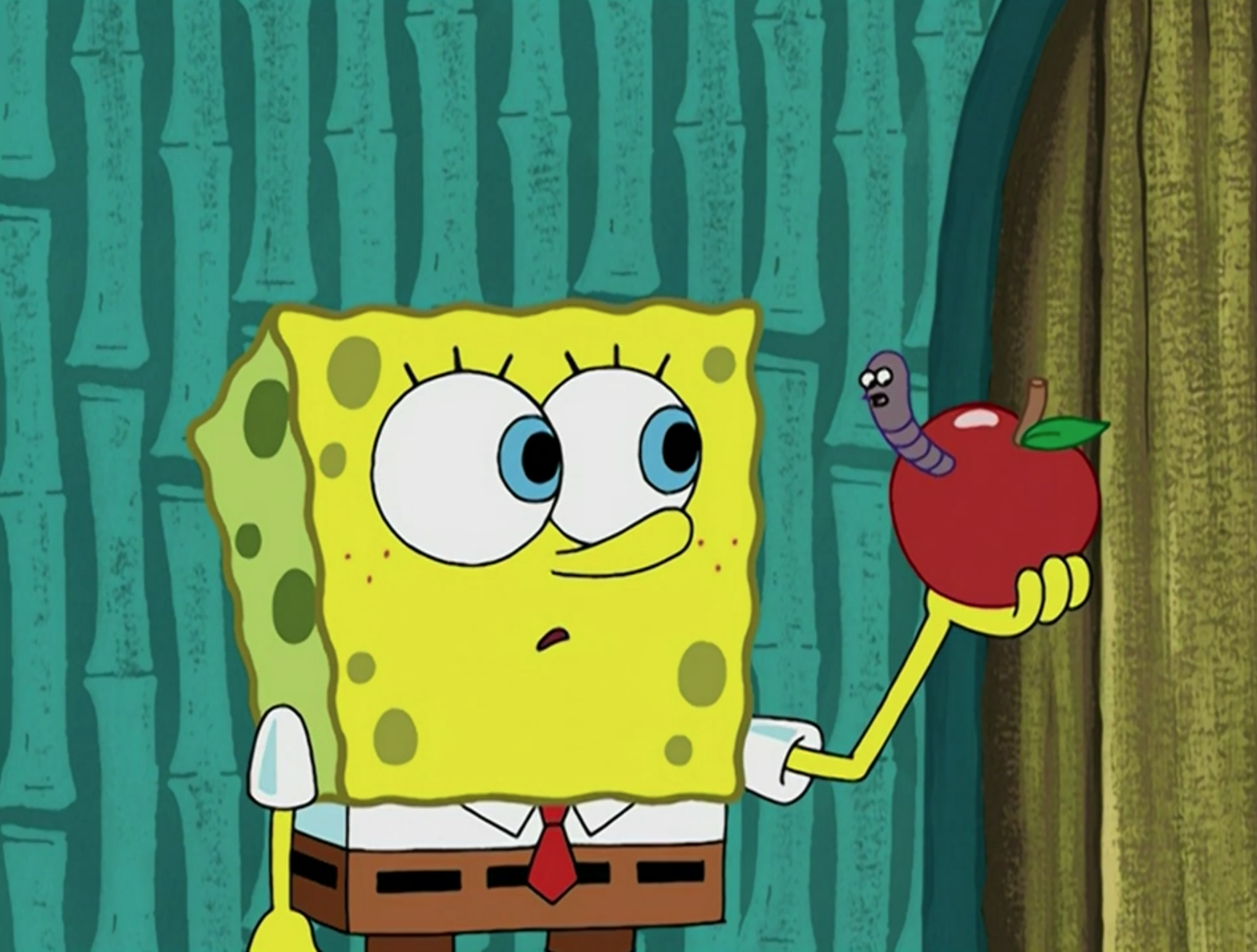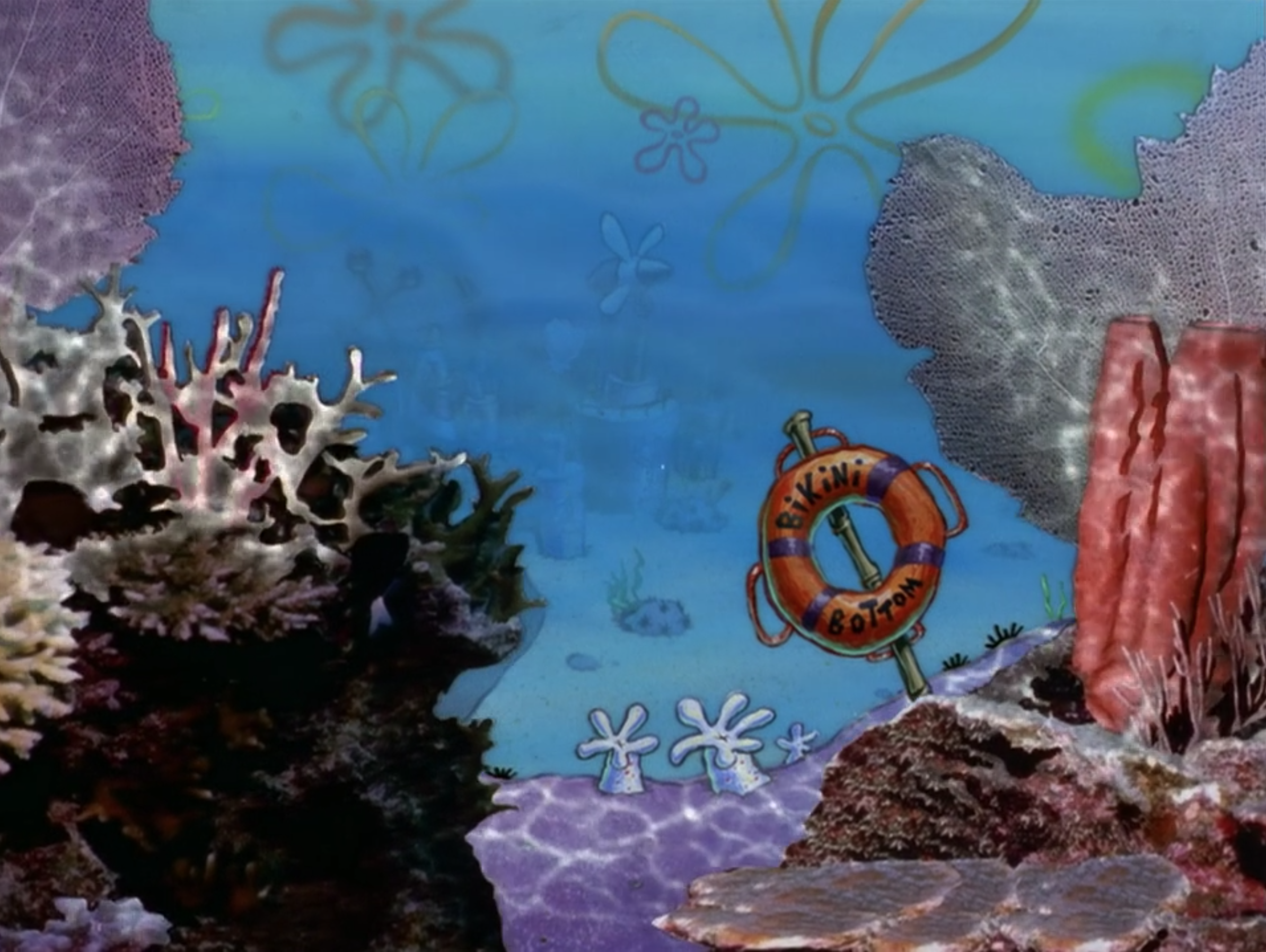The Nature of SpongeBob’s Gayness
Last summer, SpongeBob came out—in a way. On June 13, 2020, Nickelodeon, the longtime home of SpongeBob SquarePants (Stephen Hillenburg, 1999-), wrote that it was “Celebrating #Pride with the LGBTQ+ community and their allies,” setting a rainbow-tied SpongeBob alongside trans actor Michael D. Cohen (of Henry Danger [Nathan Kress, 2014-2020] fame) and the bisexual animated character Korra (first seen on Avatar: The Last Airbender [Michael Dante DiMartino and Bryan Konietzko 2012-2014]) in a much-favourited tweet (Fig. 1). A CNN story inspired by the tweet (“SpongeBob SquarePants gay? Nickelodeon just reinforced that theory”) opened by noting the “long debate about [the character’s] sexuality” (Frances 2020)—a debate that dates at least as far back as an oft-cited 2002 Wall Street Journal piece attributing the gay speculation surrounding animated icon to the show’s “sunny optimism, weird psychedelic world and peculiar humor,” as well as to the SpongeBob merch apparently flying from the shelves of New York’s gay novelty shops (Beatty). In 2007, Sarah Banet-Weiser affirmed that SpongeBob’s “adult fan base … as well as the campy, kitschy nature of the program, has resulted in a semiotic reading, by some, of the show as a ‘gay show’” (2007: 200). Significantly, though, Nickelodeon declined to comment for the CNN story; to quote Cathy Renna (of the Gay and Lesbian Alliance Against Defamation) in her response to the original Wall Street Journal piece: “He’s a sponge; how can he be gay?” (Susman 2002). SpongeBob is nothing if not “flexible”—even in his sponginess, since he seems to belong both in a kitchen sink (by all appearances) and in the sea (Banet-Weiser 2007, 200). And SpongeBob’s gayness, I want to suggest, is similarly (hetero)flexible: both household product and poriferan, manufactured and natural, prepackaged and wild. The nature of that gayness lies both in the show’s marketing and promotion and at the bottom of the ocean: a queer ecology whose depths we’ve only just begun to plumb.
That SpongeBob’s gayness floats between economy and ecology is unsurprising, given that the series has often dramatized the tension between those “most ill-fated bedfellows” (Wright and Nyberg 2015, 2) in our ever-hotter century. “Jellyfish Hunter” begins with a scene ripe for the kind of semiotic reading to which Banet-Weiser alludes: SpongeBob catches a pink jellyfish and tickles it with a fuchsia feather until it “sneezes” purple jelly into a jar (Fig. 2). SpongeBob uses the jelly to dress his Krabby Patty—the flagship burger at the Krusty Krab, where SpongeBob works—and, when some other customers get a taste, SpongeBob’s manager, Mr. Krabs, implores the young sponge to capture as many jellyfish as he can so as to feed their “whole ecosystem full of hungry paying customers,” thus conflating nature with the market. SpongeBob ends up decimating Jellyfish Fields, while a lone remaining jellyfish ends up catching (and jarring) SpongeBob, leading him to the factory where Mr. Krabs is kneading, rolling, and reaming the jelly out of the captured jellyfish. Only from his own packaged confines does SpongeBob recognize the error of his ways and decides to break the creatures free (Fig. 3). The episode contrasts SpongeBob’s approach to the jellyfish—humane, playful, and not a little bit perverse—with Mr. Krabs’s cynicism. SpongeBob’s draining of the purple goo—a queer fluid, for sure—is more commensal than commercial.
In one respect, then, SpongeBob’s gayness gets bottled up like so much jelly. On the surface, his recent coming out merely finds him riding the latest wave of rainbow capitalism in our present moment—one of “peak pride commercialization” in which brands tend to “capitalize on queerness” in the form of multi-coloured merchandise each June (Radin 2019). The same week that Nickelodeon tweeted in solidarity with the LGBTQ+ community, the toy maker Funko released a trio of rainbow-coloured figures, Batman, Hello Kitty, and SpongeBob, accompanied by an undisclosed donation to the It Gets Better Project, an advocacy group dedicated to supporting LGBTQ+ youth. (Fig. 4) Yet Funko’s Hilary Gray downplayed the characters’ gayness when she wrote of SpongeBob and company that “[t]hough these characters are not LGBTQ+ themselves, they all stand against prejudice” (2020). At the same time, SpongeBob’s official online store sold t-shirts with “LOVE IS LOVE” superimposed over the character in a rainbow silhouette as part of its “Pride collection,” but, like Gray, the accompanying description hedged that “Love IS love! Whether Mr. Krabs is going gaga over money or SpongeBob is finding the best in, well, everything.” These efforts to brand SpongeBob’s gayness squared with Banet-Weiser’s sense that Nickelodeon has often sought to “harness a political ideology—gay identity politics, queer theory—and commodify it as an aesthetic practice” (2007: 182).
SpongeBob’s environmentalism, characterized by the same queer “affects and sensibilities”— “irreverence, ambivalence, camp, frivolity, indecorum, awkwardness, sardonicism, perversity, playfulness, and glee” (Seymoure 201, 6; 4)—at play elsewhere in the show, is far harder to commoditize, to bottle up. Compare Nickelodeon’s relatively anodyne Pride tweet with another tweet, months earlier, from SpongeBob voice actor Lori Alan, linking “#The Environment” to “#QueerRights” and “Vegan[ism]” (Romano 2020) (Fig. 5). Alan’s tweet, punctuated with heart, pig, and globe emoji, isn’t about SpongeBob per se, but it reflects a queer ecology, “a mesh,” as Timothy Morton writes, “a nontotalizable, open-ended concatenation of interrelations that blur and confound boundaries at practically any level: between species, between the living and the nonliving, between organism and environment” (2010: 275-76). SpongeBob confounds the “naturalized, essential” boundaries between child/adult, gay/straight, play/seriousness (Banet-Weiser 2007, 199; 210) at the same time it confounds nature and essence itself, with an ecosystem populated by a sponge who belongs both in the sink and the sea, a squirrel who lives in an underwater treedome, a pet snail who meows, and a crab who parents a whale. The show features a wide, wily array of sea life in contrast to the binary “cats and mice” who populated “various domestic landscapes” for “earlier generations of boys and girls” (Halberstam 2012, xviii-xix). And if this ecology doesn’t look natural, that’s because ecology isn’t. “Things only look as if they fit,” writes Morton, “because we don’t perceive them on an evolutionary or a geologic time scale” (2010, 279). SpongeBob, through the fantastic affordances of animation, offers us an “antiessentialist” evolutionary perspective that “abolishes rigid boundaries between and within species” (Morton 2010, 275). In “Rock-A-Bye Bivalve,” for instance, an already winkingly queer third season episode (see Hendershot 2004, 197), SpongeBob and Patrick adopt a tiny scallop that looks like a clam, cries like a human, but chirps like a bird; at one point SpongeBob tries to feed it an apple from whence a worm emerges, bringing “greetings from Apple World.” In SpongeBob’s world, in SpongeBob’s environment, “[l]ife-forms are liquid” (Morton 2010: 275) and often indistinguishable (Fig. 6).
This indistinction—this queer ecology—is necessary because “we are losing touch with a fantasy Nature that never really existed … while we actively and passively destroy life-forms inhabiting and constituting the biosphere, in Earth’s sixth mass extinction event” (2010: 273). Not incidentally, the most prominent controversy surrounding SpongeBob outside of its main character’s gayness concerned SpongeBob Goes Green!, a 2009 picture book based on a prior short that finds Mr. Krabs flooding Bikini Bottom with carbon dioxide; when the U.S. Department of Education distributed free copies of the book to students in 2011, Fox News’s Fox & Friends accused Nickelodeon of “pushing a global warming agenda” (Nordyke 2011). A November 2019 article on Screen Rant, meanwhile, repeats a Reddit fan theory that “SpongeBob SquarePants [sic] Is Really About Global Warming,” with the unnatural SpongeBob embodying pollution, Mr. Krabs standing in for corporations, and Squidward, representing liberalism (Tyler). The same year, Alexandria Ocasio-Cortez posted a picture of Sandy the squirrel’s barren treedome on Twitter below the caption “#GreenNewDeal haters’ plan to address Climate Change.” Explicitly or implicitly, SpongeBob’s environmental take is incredibly hot (Fig. 7).
Jack Halberstam, for whom “the significance of SpongeBob SquarePants to contemporary gender norms … cannot be overstated” (2012, xxvi), has suggested that, as far as mainstream media goes, “only in the realm of animation” do we find the possibility for “alternative politics” (2011, 23). Kodi Maier draws from Halberstam in similarly suggesting that both “fantasy and animation hold the potential to queer our reality” (2018); basking in its global warmth, though, SpongeBob SquarePants doesn’t so much queer our reality as it does reflect that reality’s fantastic queerness back to us. As if to underscore this point, the show constantly blends our world and SpongeBob’s, live action and animation, the very first episode beginning with the Cousteau-like narrator (Tom Kenney, also the voice of SpongeBob) intoning “Ah, the sea” as photorealistic coral parts, curtain-like, to reveal the animated Bikini Bottom (Fig. 8). This continuous movement from our world to SpongeBob’s finds its inverse in the countless SpongeBob memes, like AOC’s, that millennials and Gen Z trade on a daily basis, with Mocking SpongeBob or Savage Patrick or Sleeping Squidward helping to pull back the curtain on our world (Lauren Michele Jackson called SpongeBob “the Most Meme-able TV show” in 2018, citing its “spectacular realism”). Funko’s special edition SpongeBob—based on a much-memed scene from the show’s third season—can be seen as an attempt to capitalize on these wilder, queerer, more natural adaptations of the series, adaptations that find us holding hands with SpongeBob or Patrick or Squidward to meet our moment, our moments, from the mundane to the meteorological. In the end, it’s SpongeBob’s world—we just live in it.
**Article published: February 26, 2021**
References
Banet-Weiser, Sara. 2007. Kids Rule!: Nickelodeon and Consumer Citizenship. Durham: Duke University Press.
Beatty, Sally. 2002. “Something About ‘SpongeBob’ Whispers ‘Gay’ to Many Men.” Wall Stret Journal, October 8, 2002. https://www.wsj.com/articles/SB1034028869241478240.
France, Lisa Respers. 2020. “SpongeBob Squarepants gay? Nickelodeon just reinforced that theory.” CNN, June 15, 2020. https://www.cnn.com/2020/06/15/entertainment/spongebob-gay-tweet-trnd/index.html.
Gray, Hilary. 2020. “HAPPY PRIDE MONTH!” Funko, June 11, 2020. https://www.funko.com/blog/article/happy-pride-month.
Halberstam, Jack. 2012. Gaga Feminism: Sex, Gender, and the End of Normal. Boston: Beacon Press.
Halberstam, Jack. 2011. The Queer Art of Failure: Durham: Duke University Press.
Hendershot, Heather. 2004. “Nickelodeon’s Nautical Nonsense: The Intergenerational Appeal of SpongeBob SquarePants.” In Nickelodeon Nation: The History, Politics, and Economics of America’s Only TV Channel for Kids, edited by Heather Hendershot, 182-208. New York: New York University Press.
Jackson, Lauren Michele. 2018. “How Did SpongeBob SquarePants Become the Most Meme-able TV Show?” Vulture, May 11, 2018. https://www.vulture.com/2018/05/spongebob-squarepants-is-the-most-meme-able-tv-show.html.
Maier, Kodi. 2018. “Louis Armstrong’s Flying Head, Clothing as Food, and Renegade Angels: Queering Animation through Fantasy.” Fantasy/Animation, July 6, 2018. https://www.fantasy-animation.org/current-posts/2018/7/5/louis-armstrongs-flying-head-clothing-as-food-and-renegade-angels-queering-animation-through-fantasy
Morton, Timothy. 2010. “Guest Column: Queer Ecology.” PMLA 125, no. 2 (March): 273-282.
Nordyke, Kimberly. 2011. “‘Fox & Friends’ Slam SpongeBob SquarePants’ ‘Global Warming Agenda.’” The Hollywood Reporter, August 8, 2011. https://www.hollywoodreporter.com/live-feed/fox-friends-hosts-slam-spongebob-220459.
Radin, Sara. 2019. “How Fashion And Beauty Brands Are Capitalizing on Queerness By Selling Rainbow Pride Products.” Teen Vogue, June 28, 2019. https://www.teenvogue.com/story/rainbow-capitalism-fashion-beauty-pride-month.
Seymour, Nicole. 2018. Bad Environmentalism: Irony and Irreverence in the Ecological Age. Minneapolis: University of Minnesota Press.
Susman, Gary. 2002. “Is SpongeBob gay?” Entertainment Weekly, October 1, 2002. https://ew.com/article/2002/10/01/spongebob-gay/.
Teodorczuk, Tom. 2018. “Will millennials keep Nickelodeon’s ‘SpongeBob SquarePants’ on Broadway?” Market Watch, May 15, 2018. https://www.marketwatch.com/story/will-millennials-keep-spongebob-squarepants-on-broadway-2018-05-08.
Tyler, Adrienne. 2019. “Theory: SpongeBob SquarePants Is Really About Global Warming.” Screen Rant, November 19, 2019. https://screenrant.com/spongebob-squarepants-show-global-warming-theory/.
Wright, Christopher, and Nyberg, Daniel. 2015. Climate Change, Capitalism, and Corporations: Processes of Creative Self-Destruction. Cambridge: Cambridge University Press.
Biography
Kyle Meikle (@kylemeikle) is an Assistant Professor of English and Communication at the University of Baltimore whose research centres on media franchises. He is author of Adaptations in the Franchise Era: 2001-16 and is currently working on a book about live-action/animated films.

